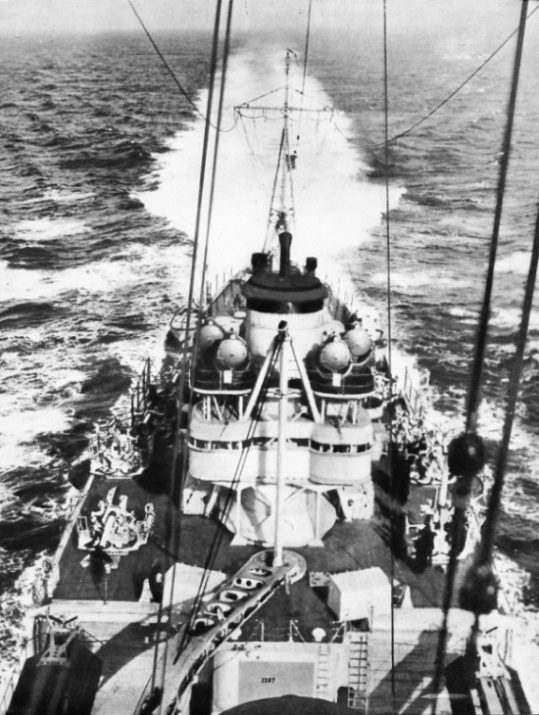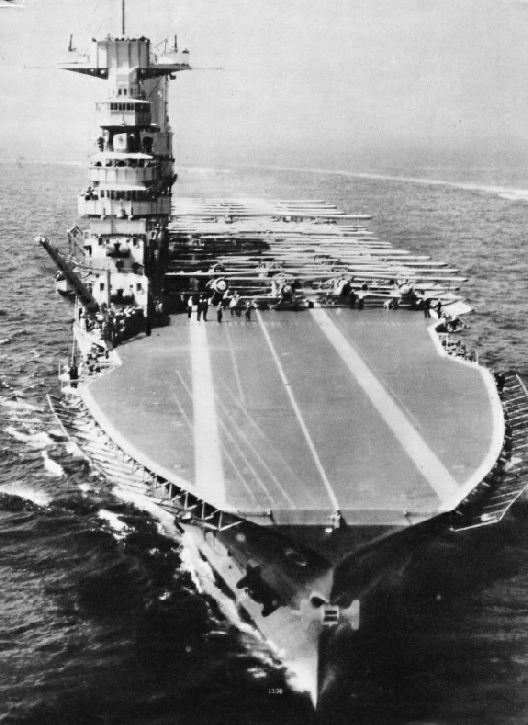
© Shipping Wonders of the World 2012-



Part 44
Part 44 of Shipping Wonders of the World was published on Tuesday 8th December 1936.
It included a centre photogravure supplement illustrating ships of the United States Navy, which formed part of the article on The United States Navy.
The Cover
The title of this week’s cover is “White Wings”, and the picture has an interesting history. It was kindly lent to me by an old friend whose husband was a sailing-ship man. I am usually unwilling to publish on the cover a picture of which I cannot give you full particulars, but in this instance I decided to make an exception. I cannot get in touch with the lady who lent me the picture, as she is on the Continent at the time of writing. It is such a splendid picture, however, that it deserves to be shown on our cover.
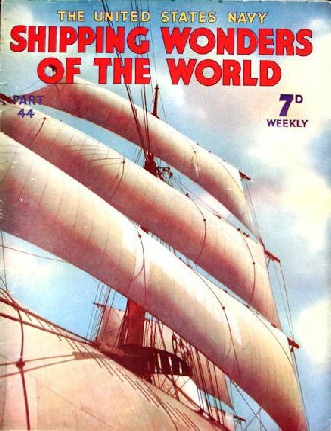
Contents of Part 44
Captain Fryatt and the Brussels
The story of the sinking and salvage of the Brussels, concluded from part 43.
Australia’s Oldest Steamship
Only half a mile from the yard on the Clyde where the Queen Mary was built there was launched, eighty-tow and a half years ago, a ship called the Edina. The Edina is still in service, as Australian readers will know, and is one of the oldest passenger screw steamers in the world. For more than eighty years the Edina has been in service, mainly in Australian waters. She is a popular veteran and is affectionately known by many nicknames, including “The Old Lady of Port Phillip”. She has had a most varied and adventurous career. Her career was not free from accident, and she was involved in several casualties, but luckily it was always possible to repair her. When in 1934 HRH the Duke of Gloucester visited Australia in HMS Sussex, the Edina was the first vessel to greet the Sussex with a signal message. The Edina has carried thousands of passengers between Melbourne and Geelong (Victoria), and doubtless many of my Australian readers have travelled in her.
The United States Navy
The two most striking features of the modern United States Navy are the strength and power of the battleships and the number of destroyers and submarines. It is quite true that American films have done much to make known the United States Navy, but not always quite correctly. This chapter is the first in a new series on the Fleets of the Foreign Powers. This series on the world’s navies will give a comprehensive account of the naval forces of various countries.
The United States Navy (photogravure supplement)
Contents of Part 44 (continued)
Dutch East Indies Inter-Island Packet
A description of the Ophir, which is in size and capacity midway between the large vessels on the Australian trade and the small ships in the inter-island business. She is engaged in the express service along the north coast of Java, in which there are sailings twice a week in either direction between Batavia and Surabaya, with a call at Semarang. The Ophir is a motor-driven vessel of 4,070 tons gross.
This is the thirty-fourth article in the series on Merchant Ship Types.
Luxury Cruising
The story of the Arandora Star which takes a limited number of passengers on long or short voyages to some of the most attractive regions in the world. We can voyage by proxy in this chapter about the Arandora Star where this luxury liner is described, along with the cruises on which she is employed. The Arandora Star also featured in the earlier chapter on British Shipping.
Sailing Ships in Collision
A two-page photo-feature covering the story of the collision between the Port Crawford, the Peeblesshire, and the Ditton in Newcastle Harbour.
The Welland Canal
The new Welland Canal, a masterpiece of modern engineering, is the fourth of a series of canals designed to link Lake Ontario and Toronto with Lake Erie and the rest of the Great Lakes system. The Niagara Falls have always been a hindrance to water transport in North America, and the fourth Welland Ship Canal is described in this chapter.
This article is the seventeenth article in the series on World Waterways.
The Voyage of the Svaap
Having learnt navigation in a public library, a young American, William Albert Robinson, sailed round the world from New York between June 1928 and November 1931 in a ketch only 32 feet 6 inches long overall. This intrepid yachtsman sailed from New York on June 23, 1928, and returned to New York on June 23, 1931, after having sailed round the world.
This chapter is the ninth article in the series Great Voyages in Little Ships. The article is concluded in part 45.
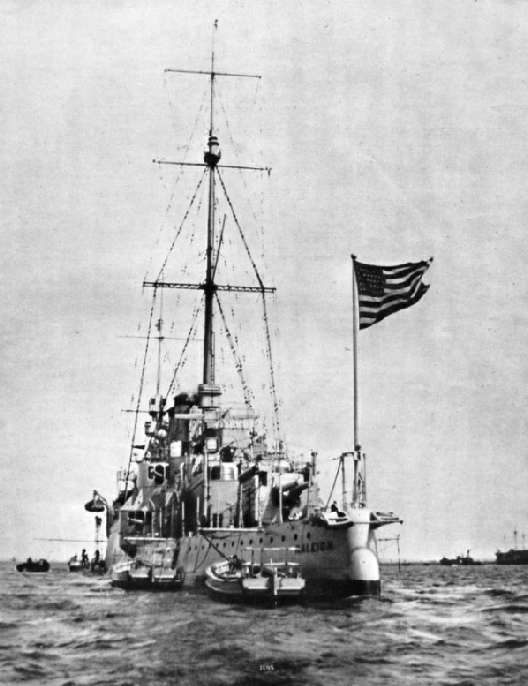
The United States Navy: Photogravure Supplement
THE “STARS AND STRIPES” IN BRITISH WATERS. This photograph of the United States cruiser Raleigh was taken at Gravesend, on the River Thames. The Raleigh is one of the ten cruisers of the Omaha class, built in 1923-25. Of 7,050 tons displacement, these vessels have a length of 550 feet on the water-line, abeam of
55 ft 4 in and a maximum draught of 14 ft 4 in. The Raleigh is armed with ten 6-in and four 3-in anti-aircraft guns.
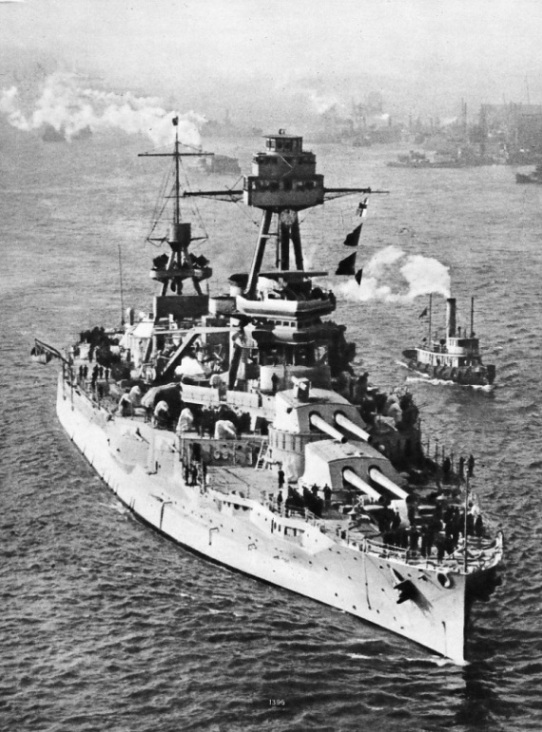
The United States Navy - 2
STEAMING UP THE EAST RIVER, on her way to Brooklyn Navy Yard, the United States battleship Texas. Completed in 1914, the Texas - with her sister ship, the New York - has a displacement of 27,000 tons. Her reciprocating engines have a designed horse-power of 28,100 and give her a speed of 19.7 knots. She has a length on the water-line of 566 feet, a beam of 106 feet and a mean draught of 26 feet.
